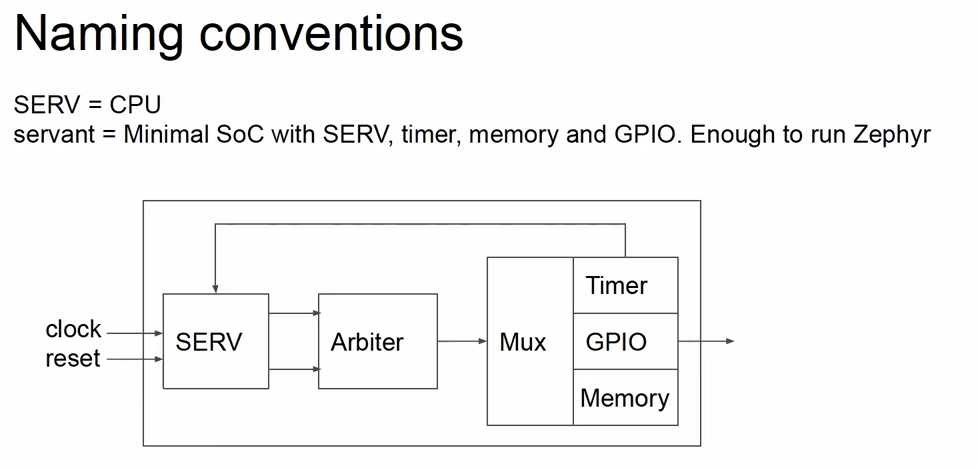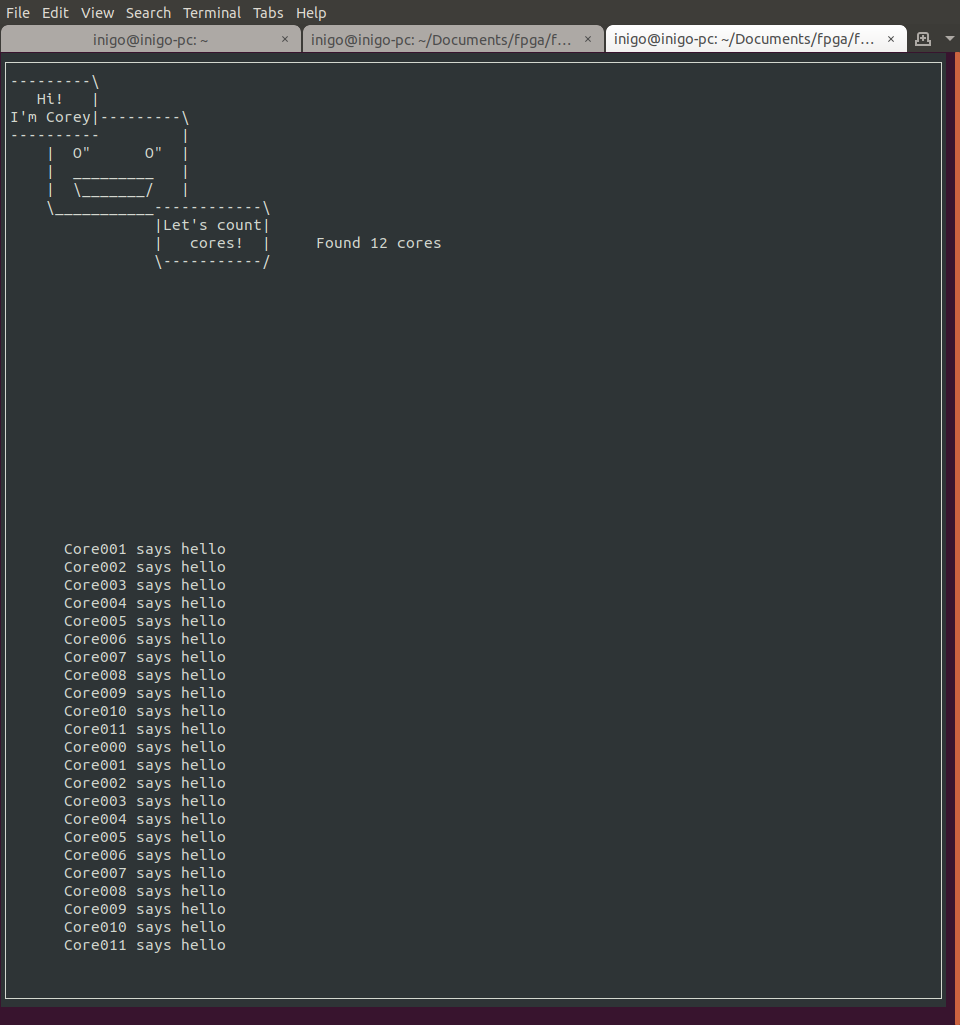Welcome to my blog!

Here I am, enjoying nature in a lost forest
Contact: muguruzainigo@gmail.com
Running a RISC-V softcore in a FPGA
Nowadays there is a very big trend in implementing softcores in FPGAs. This trend has been boosted by the appearance of RISC-V. For those who are not familiar, RISC-V is an open-source and free Instruction Set Architecture (ISA) based on RISC architecture. The practical consequence is that you can get freely the ISA of RISC-V, and implemented it in a chip.
Normally, the first step would be to design an architecture based on RISC-V and later, build it in a chip. There are some companies that they design RISC-V cores, and sell the license to chip manufacturers.
In this page, you can find RISC-V based IP Cores that SiFive offers, the most known company in this field.
I have heard some times that RISC-V is the open-source hardware of computer architectures, honestly, I wouldn’t say so. It is true that you don’t need to pay for the usage of RISC-V ISA. But, at the end of the day, you need to get a chip with that architecture, and the architecture implementations is not open, in other words, silicon makers, do not disclose how the implement the computer architecture in silicon.
From the other hand, there are many truly open-source RISC-V implementations (softcores), made for FPGAs. Additionally, they are synthesized using open-source tools. So, from the ISA implementation to the bitstream creation is made in open manner!
![]() I am not a RISC-V expert, if anything stated here is not right, let me know
I am not a RISC-V expert, if anything stated here is not right, let me know ![]()
Now, I am going to present a couple of examples of RISC-V running in my Alhambra II board.
There are several RISC-V implementations using open-source tools out there. One of the most popular one is the PicoRV32. This repo allows you to synthesize a RISC-V RVM32IC Instruction Set and flash it in your FGPA, using open-source tools. In this case, it is truly an open-source effort from beginning to the end, as the license of PicoRV32 is ISC license (similar to MIT license or the 2-clause BSD license). Later, you can use RISC-V toolchain to load your binaries to your softcore!
Serv and Servant
In my case, I stumbled upon another implementation. Olof Kindgren’s serv.
Serv is an 32-bit serial RISC-V CPU. It uses Fusesoc as package manager and building tool, some clarifications about this later. Serv
is the CPU itself, once you add a timer, some memory and GPIOs you obtain a SoC enough
to run complex programs. This SoC is called servant, below a diagram about its composition:
 Taken from RISC-V talk, linked below
Taken from RISC-V talk, linked below
This SoC has enough capabilities to run Zephyr RTOS. And actually, the example runs it!
As the core has support for different Lattice iCE40 boards, I ported it for the Alhambra II board. Thanks to the use of Fusesoc, Verilog coding was not necessary, I just added new entries in the .core file regarding the board.
The example runs Zephyr RTOS and prints a hello world example. If you think about it, is pretty neat, you have a RISC-V softcore
that is able to run Zephyr that executes a program that prints hello world message:

Olof aims to extend the functionality of the core, to make it more useful. For instance, adding a c extension to it would allow coding c programs and
compile it using RISC-V tool-chain.
I have pasted below the usage of the resources of the servant, as you can see, it doesn’t take much logic cells in a low-end FPGA:
Info: Device utilisation:
Info: ICESTORM_LC: 610/ 7680 7%
Info: ICESTORM_RAM: 17/ 32 53%
Info: SB_IO: 2/ 256 0%
Info: SB_GB: 6/ 8 75%
Info: ICESTORM_PLL: 1/ 2 50%
Info: SB_WARMBOOT: 0/ 1 0%
If you are interested about the details of Serv/Servant, see the vide below:
CoreScore
Olof also created CoreScore, it allows you to test how many serv cores you can fit in your FPGA. So, in this case, you can implement a multi-core RISC-V SoC in your FPGA :)
In the case of the Alhambra II, I was able to fit 12 serv cores in total:

As the design works at 16MHz, and the board contains a 12MHz oscillator, I used one of the PLLs of the iCE40 to crate those 16MHz out of 12MHz. Below the resource utilization of the design:
Info: Device utilisation:
Info: ICESTORM_LC: 5969/ 7680 77%
Info: ICESTORM_RAM: 15/ 32 46%
Info: SB_IO: 3/ 256 1%
Info: SB_GB: 6/ 8 75%
Info: ICESTORM_PLL: 1/ 2 50%
Info: SB_WARMBOOT: 0/ 1 0%
Fusesoc
Fusesoc is a HDL package manager and a build system for digital hardware designs. When you start working in a project that requires the use of several modules, it is convenient to have a tool that allows you to manage everything. Additionally, the reuse of designs is something crucial for speeding up new designs, this is where Fuesoc can shine.
I profited my time to port also the Fusesoc blinky example to the Alhambra II board, so it is part of this project too. To make it work,
it just required to add the pinout file and the board synth parameters.
Conclusion
I think this post shows how digital hardware design is a very buzzing field. To make this post, I have used several open-source items: RISC-V softcores, Zephyr, Fusesoc, Serv and Servant or CoresCore. I really hope that this new trend changes the landscape of digital design tools, where proprietary and black boxed-tools have been the rule, dominated by just a couple of very big FPGA vendors. In addition, it also opens the door of fusing this technology with others that are really consolidated, like Linux. I am really looking forward to see heterogeneous embedded systems where all these tools are blended together to squeeze the best of each!
Resources
About RISC-V
About Serv
-
Bit by bit - How to fit 8 RISC V cores in a $38 FPGA board talk by Olof Kindgren
-
Diode Zone Serv video by Olof Kindgren
Repositories
